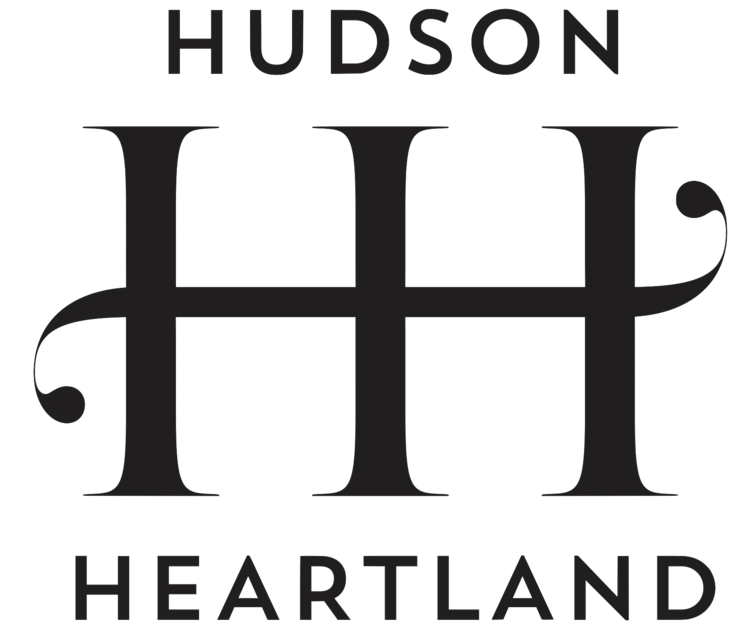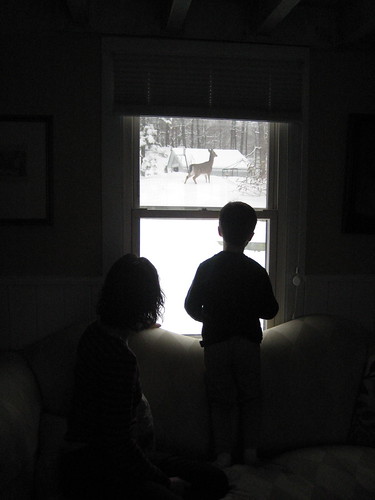So they want to build on it, 300 or so houses, McMansions, of course, because that’s what builders build when they build new. An ignorant newspaper editor around these parts recently praised the sketches intended for the other development because each one was different! And had lots of windows!
Anyway, here’s my point. My point is, if you’ve got to build it, build it compactly. Build it around the intersection at the heart of this proposed development, and make half of it town houses, insert a few true mansions among them, limit the number of large single-lot homes, put in a green, leave a median strip between the homes and the main road, have multiple access points to it, and add a convenience store and a post office relay station and a place where the library can park a book mobile once a week, and sidewalks, trails into the woods, a traffic light at the intersection, designate a small daycare facility, and save the entire area another headache that none of us need. From every perspective—environmental to taxational to educational to aesthetic—this is the better way.
Advantages of building the way I’ve described:
- School buses can pick up multiple children at fewer stops, thus saving gas, increasing public safety, reducing traffic delays (thus saving even more gas), and requiring fewer buses which will get less wear and tear.
- Police and fire coverage will not need to be as dispersed.
- Garbage pickup will be more consolidated.
- The woodland character can be largely preserved, thus improving the value of the homes.
- A convenience store will require fewer car trips to the nearest grocery store for essentials, thus saving gas, time, and traffic and allowing single-car families to move in.
- Pedestrian traffic along the main road would be reduced, thus preserving public safety.
- Kids could have a safe place to play within sight of homes and businesses.
- The rural/recreational advantages of the area would be retained, even improved.
- Stream runoff will be less impacted by the forced runoff from lawns and pavement, thus preserving biodiversity in regional waterways.
- Public transportation (bus) becomes a viable option to serve the development, connecting it to regional rail and commuter bus lines.
- The bonds of community will remain stronger than in developments with large homes separated by daunting swaths of non-native plantings.
- Retaining trees means cooler, cleaner air.
Those pestilential McMansion developments exist in the region, of course, in a sort of rough ring around our semi-protected little swath, and those woods are one of the buffers. Coming north you pass out of a large commercial zone, past a few developments built up against sensitive habitat, then enter a long cool green corridor, where some conscientious prankster, alarmed at the speeding traffic, has pasted pairs of deer-eye-sized reflectors in the trees to encourage people to slow down at night. The stone walls. The thick trunks fading back into the darkness of hillsides, then a rushing torrent pouring down from the east. This, a developer wants to ruin, making it house after house after house after house, replacing forest with lawn, replacing native stone walls with imported, pasting up the shitty architecture of least common denominator over triple garage doors, the whole thing taking up the whole space.
To the developer who thinks there’s no market for such an idyllic development as the one I've described, I say: look at the towns nearby. They were built the same way, 150 years ago, and they're fully occupied with homes that retain their value even in real estate downturns. Imagine if the closely-built, walkable, traditional homes in this area were brand new? Demand would soar.
To the local governments who claim that they have no power in the face of such developers and can’t rezone the area for adjoined housing or redraw the property lines, I say, you’re just not using your imagination. Considering that housing prices would be more stable, if not higher, if you build the way I suggest, and that the community would benefit, it seems that developer and town could easily reach agreement on the particulars.
For the record, I'm not against growth per se (although my preference would be to see density increase in established zones before we rip out more woodland). I wouldn't be surprised to know that the developer has been here longer than I have. No, my take on development is not "last one in lock the door." Rather, it's more like "next one in, don’t fuck the place up."
Anyone who knows anything about how to accomplish such feats of exurbitude, please comment below.
•








